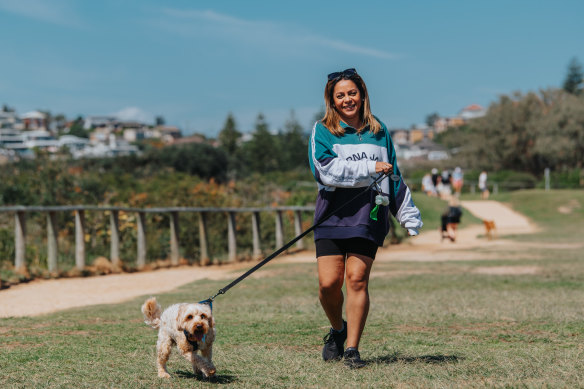This was published 3 months ago
‘I knew what sex looked like for me’: Love and dating with Crohn’s
When Harrison Kefford, a 30-year-old writer from Melbourne, underwent surgery to remove the diseased part of his bowel caused by Crohn’s, the main thing on his mind wasn’t the pain or the practicalities of his new stoma bag. It was how it would affect him socially.
Being in his early 20s at the time, Kefford was focused on socialising and dating, something most people that age do without a second thought.

Harrison Kefford is a Melbourne-based writer living with Crohn’s disease.Credit: Justin McManus
“Prior to having the stoma bag, I knew what sex looked like for me,” he explains.
“But then there’s this added layer of, ‘Oh my God, there’s a bag stuck to you now. And how does that work in terms of how I can move physically or what I can and can’t do? And also what is it going to look like for the other person?’”
About 100,000 Australians live with Crohn’s disease or ulcerative colitis, the two major types of inflammatory bowel disease (IBD). A chronic condition that can affect any part of the gastrointestinal system, its symptoms, including abdominal pain and fatigue, can be debilitating.
Phoebe Rogers, a Sydney-based clinical psychologist, says any chronic illness can bring with it feelings of isolation and shame.
“[But] for Crohn’s and bowel disease that impact bodily functions, I think it adds that extra layer of embarrassment,” she says.
In turn, she says this can lead to people withdrawing from social situations, which can have significant impacts on their mental health.
Kefford has had his stoma bag for almost three years, and while some days it can still be a struggle, he’s not yet had any bad dating experiences.
In 2021, Kefford started posting about living with Crohn’s on TikTok, where he tackles the little-known and often stigmatised disease with humour and candour. The platform has connected him to others with Crohn’s, both locally and globally, and even resulted in a few dates.
“Social media is so powerful ... it’s the best tool because I didn’t know people my age had Crohn’s,” he says, adding that most of the people featured in advertising for the companies that manufacture stoma bags are older.
Natasha Jiwani, 37, from Sydney agrees there was little public awareness about Crohn’s when she was diagnosed in her late teens, particularly among people her age and her Indian family.
“There’s a lot of stigma associated with IBD and gut health. You normally think of it as an old person’s disease,” she says.
The HR worker says this meant she initially struggled to advocate for herself in social settings, like when she was on a date or at a dinner party, and couldn’t eat certain foods.
“Very quickly I was humbled by the condition and realised you’ve got to listen to your body. [Now] I’ve got a no excuse policy. If it doesn’t work, I’m not going to eat it.”

Natasha Jiwani with dog Rummy on Sydney’s northern beaches. She says “there’s a lot of stigma associated with IBD and gut health”.Credit: James Brickwood
Both Kefford and Jiwani say they have struggled with body image at different points in their lives.
In 2017, while on holiday in India, Jiwani underwent an emergency bowel resection, which left her with a large scar on her abdomen.
“I just didn’t feel comfortable wearing a bikini or really embracing my body ... but now I love my scar, I don’t even think twice about it,” she says.
“It’s my superpower and my edge. If someone wants to judge me for it, then that’s on them.”
Natasha Jiwani, a 37-year-old with Crohn’s
For Kefford’s part, he’s recently gained a little weight (weight loss is a common side effect of Crohn’s). While he acknowledges weight gain is a sign he’s healthy, it’s been hard to adjust, particularly given his changed appearance from images on his social media and dating profiles.
“I just have to accept that’s what my body looks like now,” he says. “[But] it’s a better trade-off because I was just in so much pain I couldn’t eat.”
One of the biggest dilemmas for Crohn’s sufferers in the dating world is when to bring up their illness.
Rogers doesn’t believe there’s an ideal time. Rather, it’s about “assessing a person by talking about emotions or other struggles or challenges”.
By disclosing small moments of vulnerability, you will be able to gauge how someone might respond to your chronic illness.
Jiwani, who married and divorced young so didn’t start dating until her 20s, recommends taking things at your own pace. “Be honest on your own terms. It’s not important to share everything right away but do it when you feel comfortable.”
Now in a supportive relationship, she adds that a chronic diagnosis can be a source of uniqueness. “As cheesy as it sounds, it’s my superpower and my edge. If someone wants to judge me for it, then that’s on them.”
For more information and support, visit Crohn’s and Colitis Australia.
Make the most of your health, relationships, fitness and nutrition with our Live Well newsletter. Get it in your inbox every Monday.